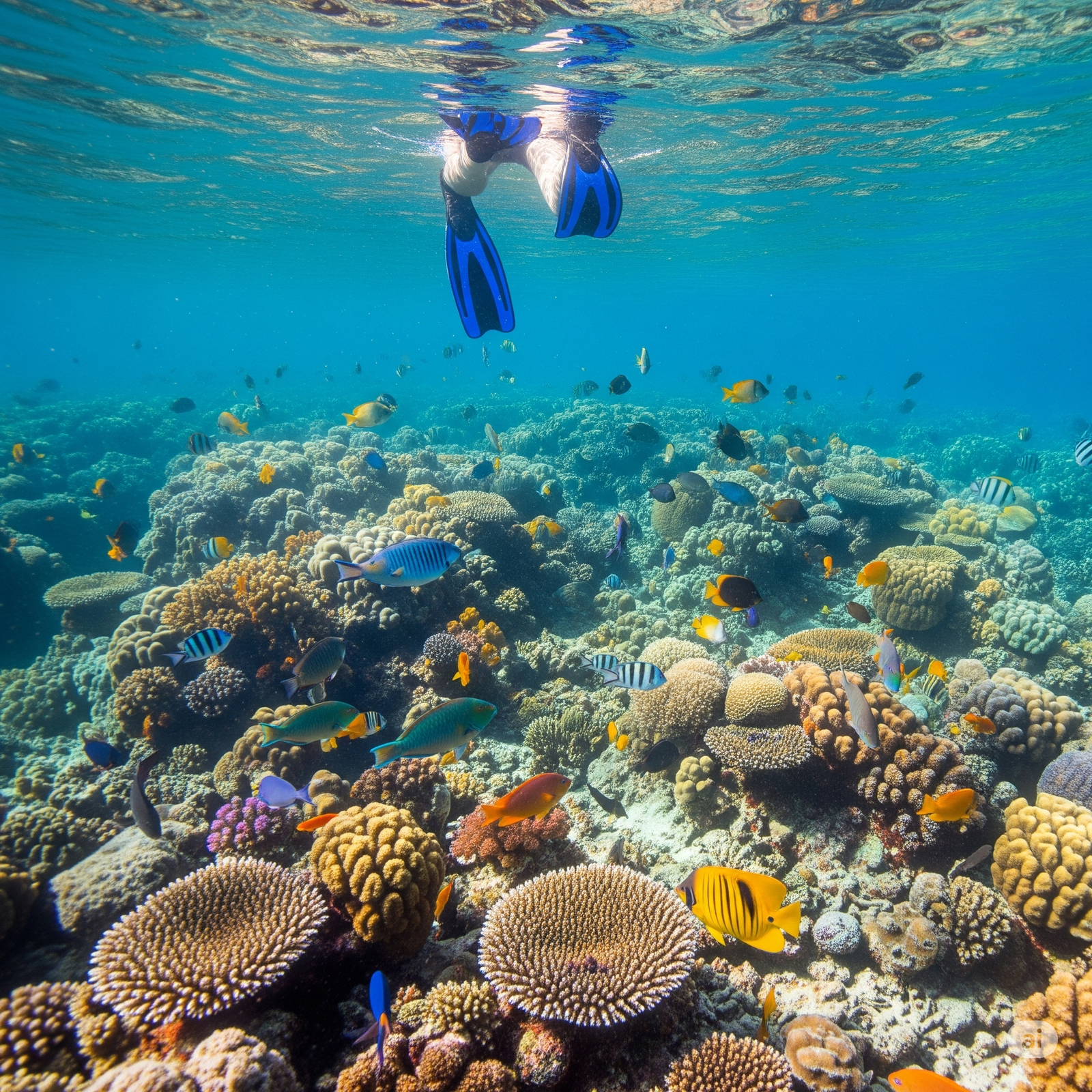Vanuatu, an archipelago nation in the South Pacific, is often celebrated for its vibrant culture, active volcanoes, and pristine beaches. But venture beneath its turquoise surface, and you’ll discover another world entirely – an underwater paradise teeming with technicolor coral reefs and a dazzling array of marine life. For snorkelers, Vanuatu offers an unparalleled experience, from shallow, sun-drenched reefs to intriguing underwater caves and even accessible shipwrecks.
If you’re dreaming of a South Pacific escape where you can effortlessly glide amongst Nemo and Dory’s real-life cousins, Vanuatu’s snorkeling spots are waiting. Here are some of the best places to dip your mask and fins:
1. Hideaway Island Marine Sanctuary (Efate)
Just a short drive and a quick ferry ride from Port Vila, Efate’s Hideaway Island is not just convenient, it’s an absolute must-visit for snorkelers of all levels. It’s a protected marine sanctuary, meaning the coral and fish thrive in abundance.
- What makes it special: The incredibly clear, shallow waters make it perfect for beginners and families. You’ll encounter vibrant soft and hard corals, giant clams, anemones, and a dizzying variety of reef fish. Look out for the world’s only underwater post office where you can send a waterproof postcard!
- Marine life: Expect to see parrotfish, clownfish, butterflyfish, angelfish, damselfish, and often small reef sharks or rays cruising by.
2. Eton Beach & Blue Lagoon (Efate)
While perhaps better known for their stunning freshwater springs and impossibly blue swimming holes, both Eton Beach and the Blue Lagoon on Efate also offer surprisingly good snorkeling where the freshwater meets the sea.
- What makes it special: The unique mix of fresh and saltwater creates distinct ecosystems. At Eton Beach, the reef fringes the calm, sandy shores, while at Blue Lagoon, you can often find small reef fish navigating the shallower, clearer sections near the edges. The experience is more about gentle exploration than vast reef systems.
- Marine life: Smaller reef fish, occasionally juvenile larger species, and interesting coral formations close to shore.
3. Million Dollar Point (Espiritu Santo)
For a snorkeling experience unlike any other, head to Espiritu Santo’s Million Dollar Point. This isn’t a natural reef, but a unique historical site that has become an artificial one.
- What makes it special: At the end of WWII, the US military dumped millions of dollars worth of equipment – bulldozers, jeeps, trucks, cranes – into the sea rather than selling it cheaply to the locals. These submerged relics have since been colonized by coral and marine life. Snorkeling here means exploring history and nature simultaneously. The items are in relatively shallow water, making them accessible.
- Marine life: While the main attraction is the submerged machinery, vibrant corals have grown over them, attracting a variety of reef fish, moral eels, and even occasional larger pelagics passing through.
4. Champagne Beach (Espiritu Santo)
Often touted as one of the world’s most beautiful beaches, Champagne Beach on Santo also offers delightful snorkeling just offshore.
- What makes it special: The namesake “champagne” effect from volcanic gas bubbling through the sand is intriguing. The waters are exceptionally clear and calm, making for excellent visibility. The reef here is healthy and vibrant, accessible directly from the beach.
- Marine life: Abundant reef fish, colorful corals, and the chance to spot small rays or turtles in the calmer waters.
5. Port Resolution (Tanna)
While Tanna is famous for its Mount Yasur volcano, the waters around Port Resolution also hold their own. This area offers some good snorkeling, especially if you’re already on the island for the volcano.
- What makes it special: The reefs here are less frequently visited than those on Efate or Santo, potentially offering a more pristine experience. The volcanic activity can sometimes influence the underwater landscape in unique ways.
- Marine life: Healthy coral growth, various tropical fish, and potentially some unique species drawn to the volcanic environment.
Tips for Responsible Snorkeling in Vanuatu:
- Respect the Reef: Never touch, stand on, or kick the coral. Even a gentle touch can damage these fragile ecosystems.
- Use Reef-Safe Sunscreen: Chemical sunscreens can harm coral. Opt for mineral-based, reef-safe alternatives.
- Don’t Feed the Fish: It disrupts their natural diet and behavior.
- Leave No Trace: Take all your rubbish with you, and don’t take anything from the marine environment.
- Go with a Guide: Local guides can show you the best spots, ensure your safety, and provide valuable insights into the marine life.
Vanuatu’s underwater world is a treasure waiting to be explored. Whether you’re a seasoned snorkeler or a curious beginner, the dazzling coral reefs and abundant marine life promise an unforgettable experience. So grab your gear, dive in, and prepare to be mesmerized by the natural wonders beneath the waves.


Leave a Reply